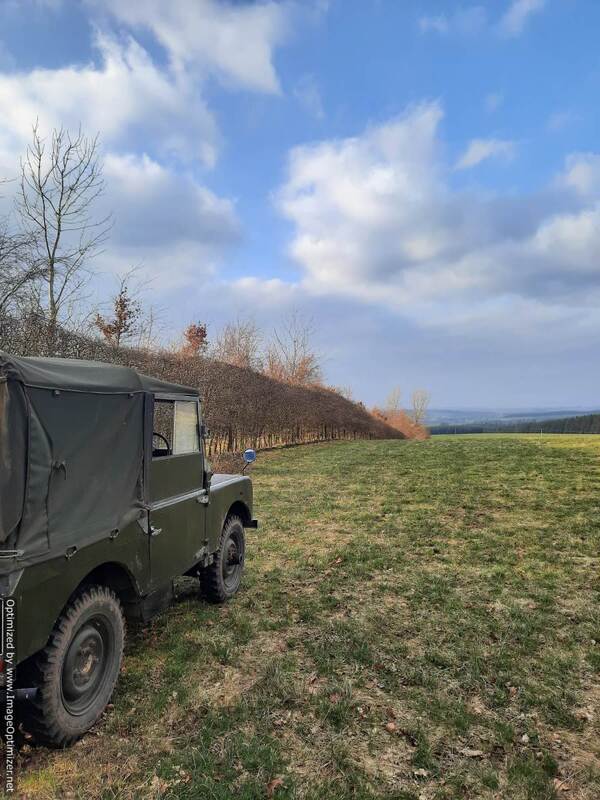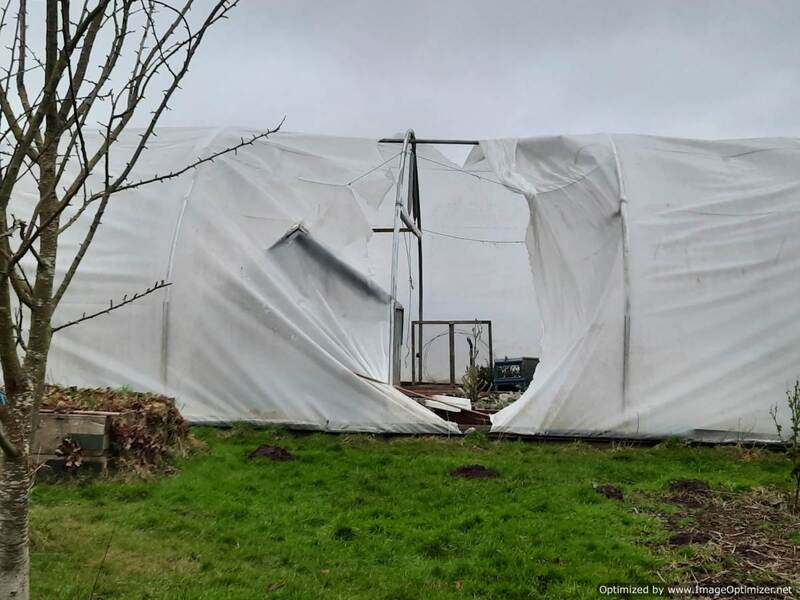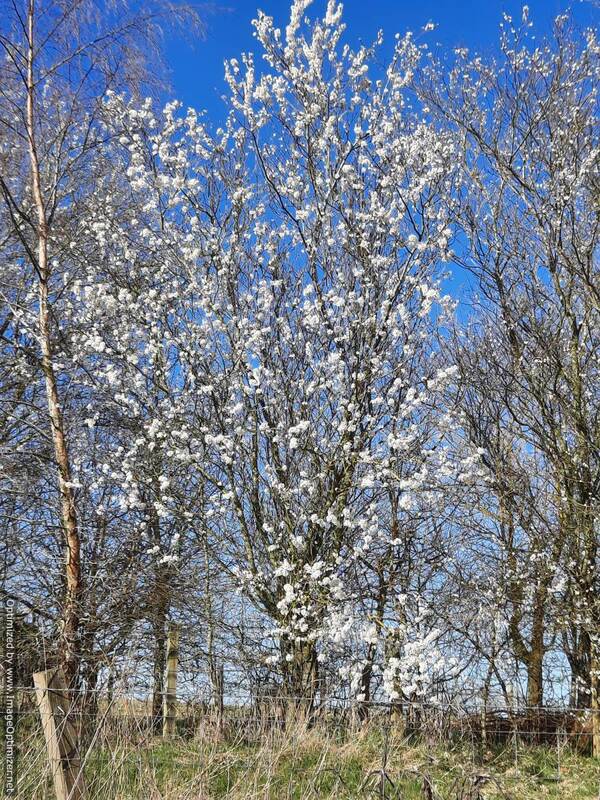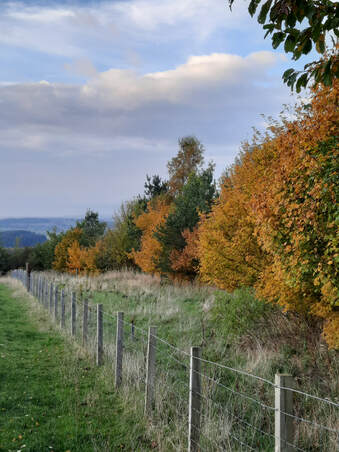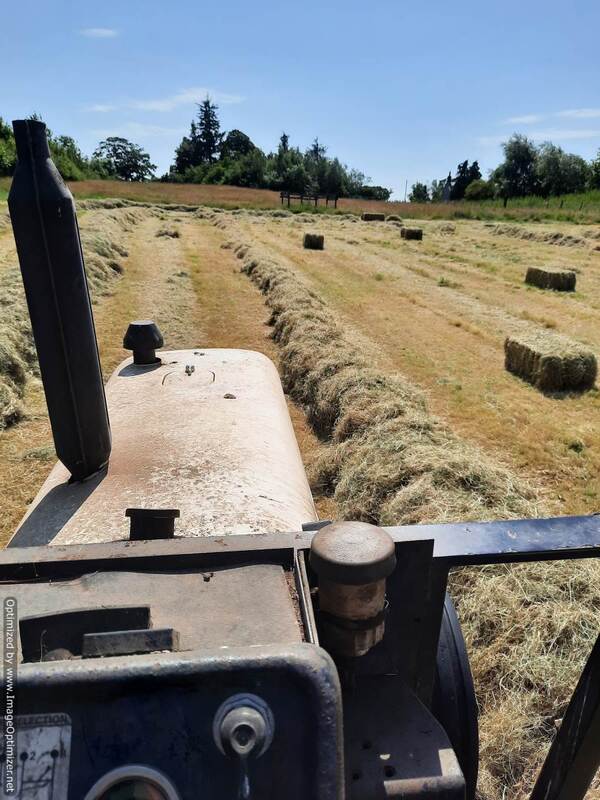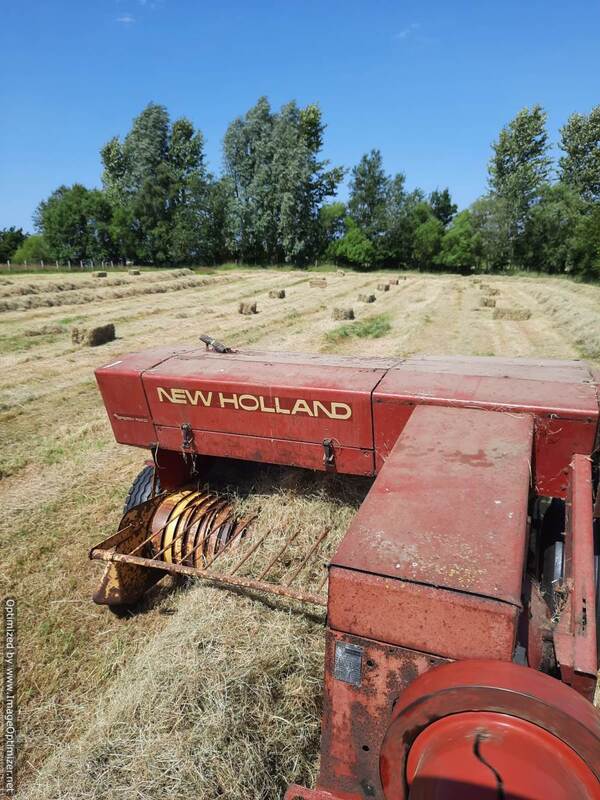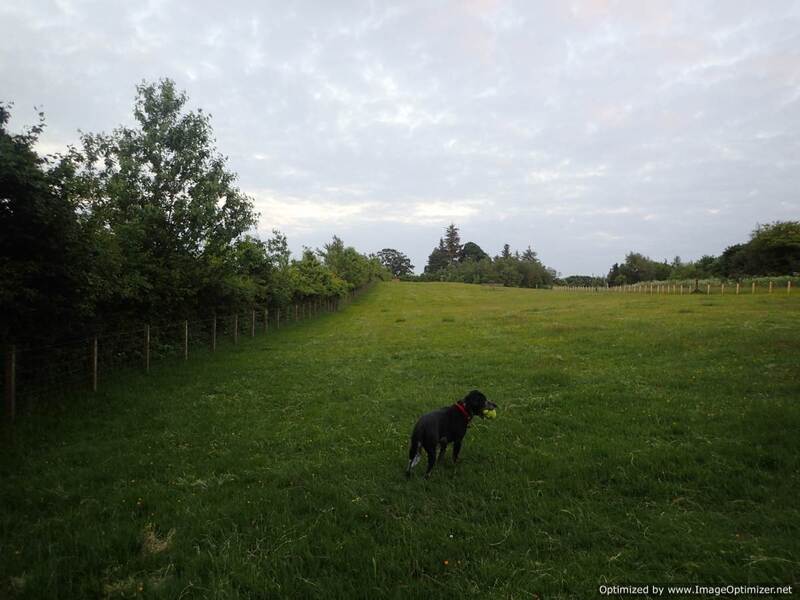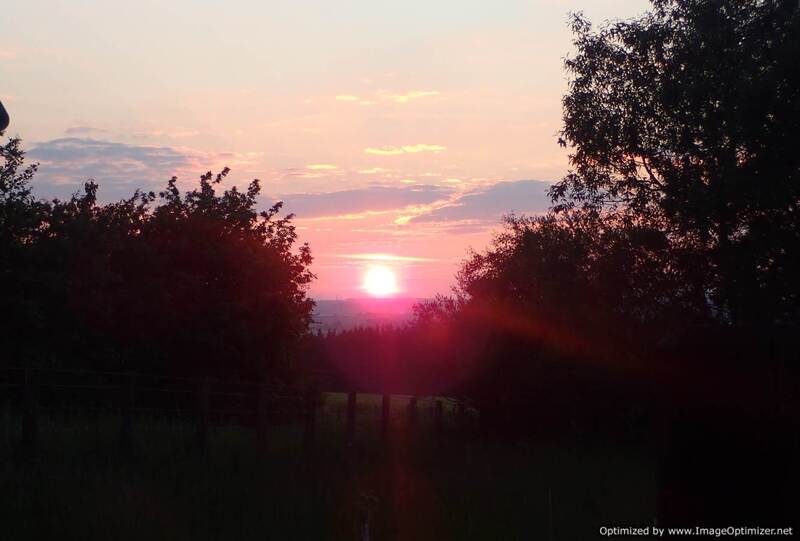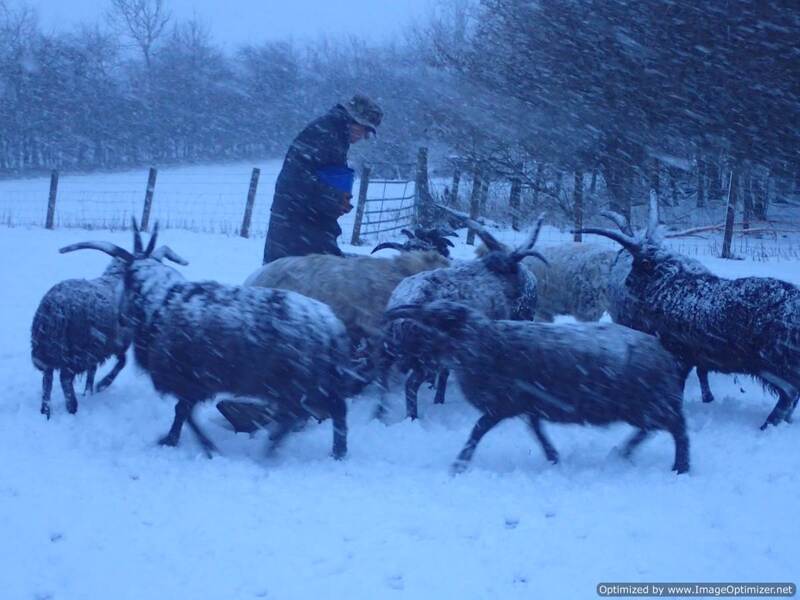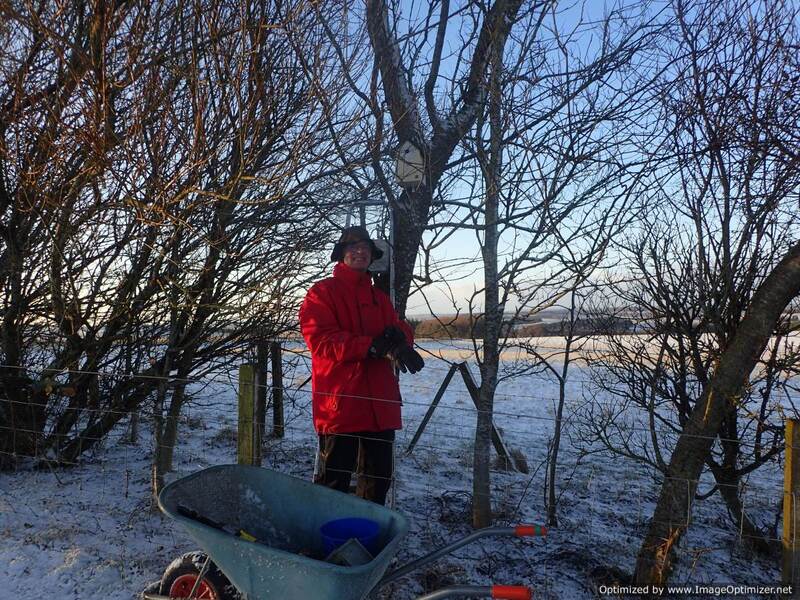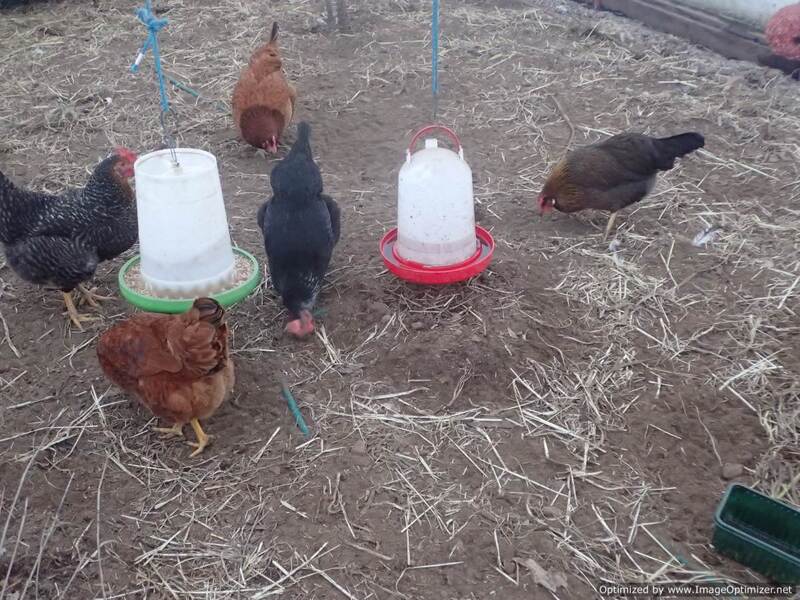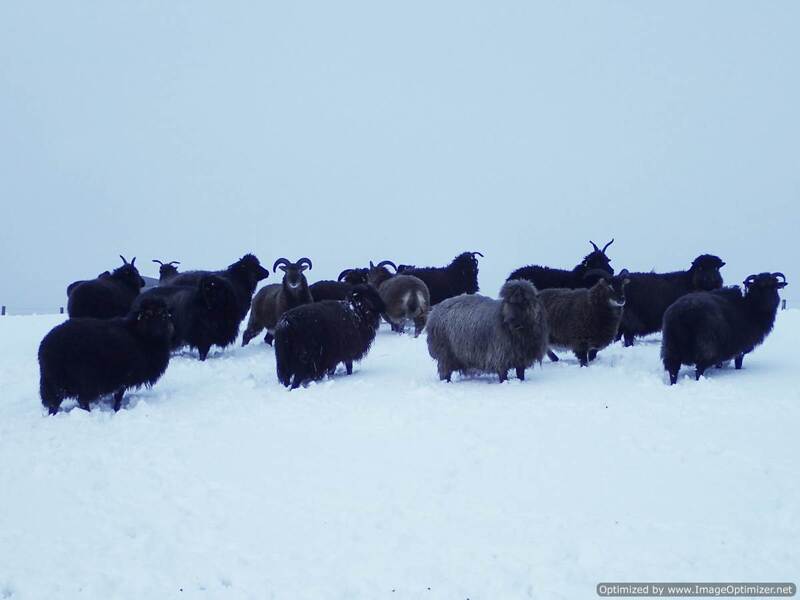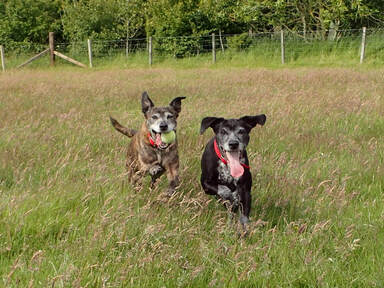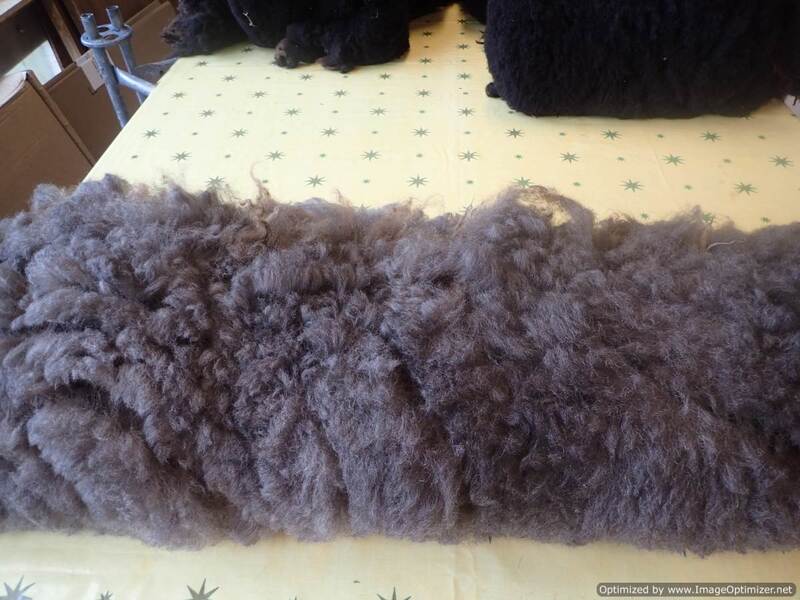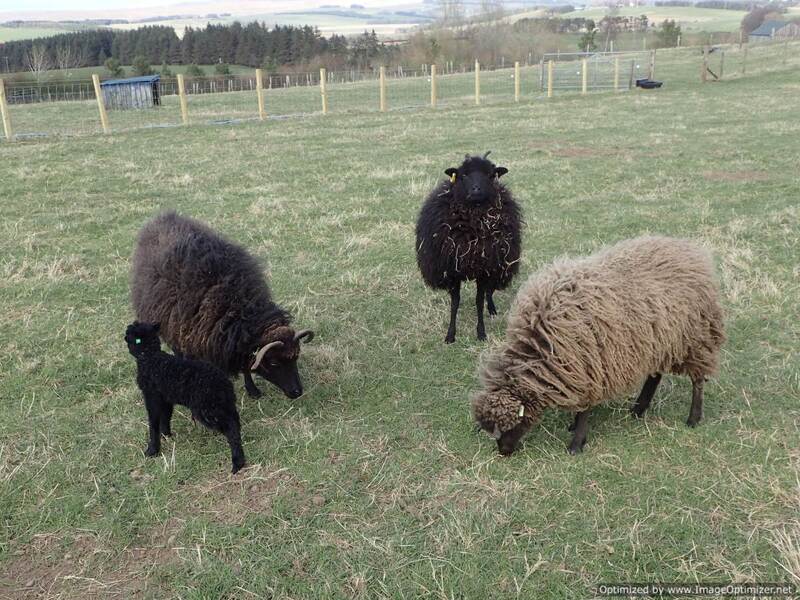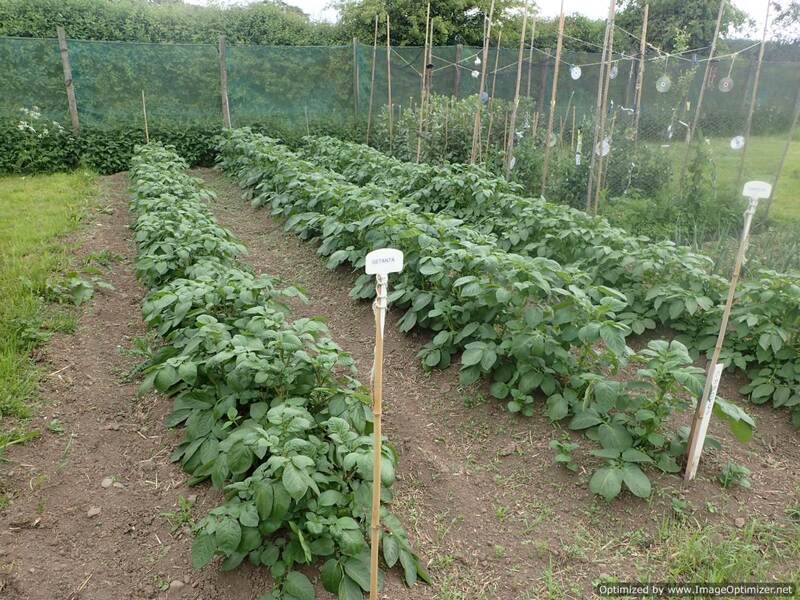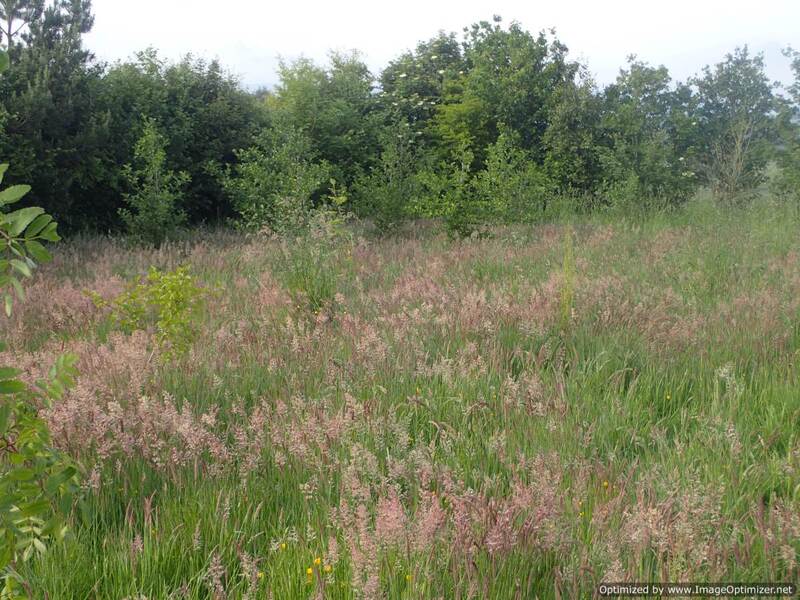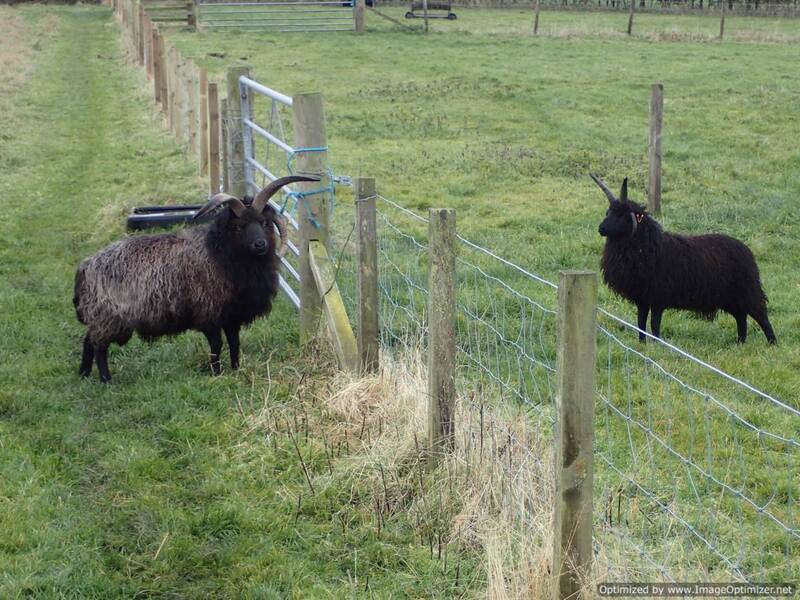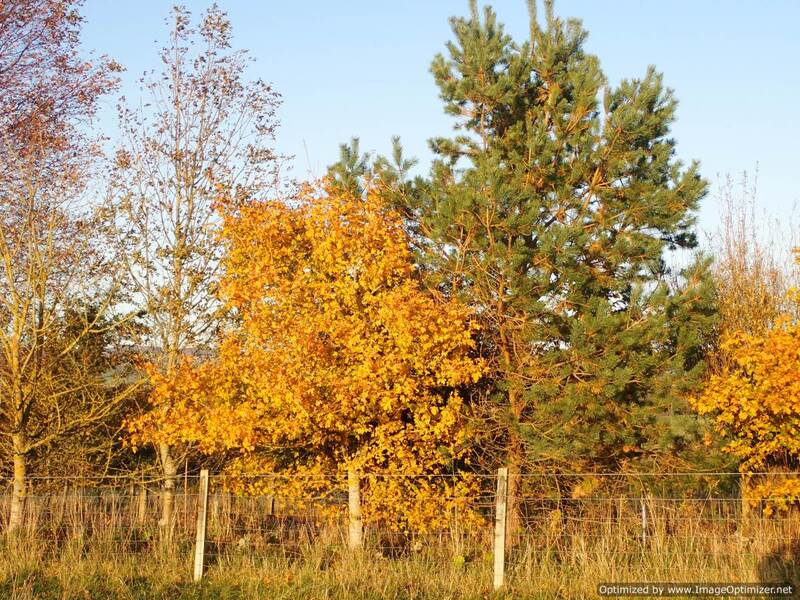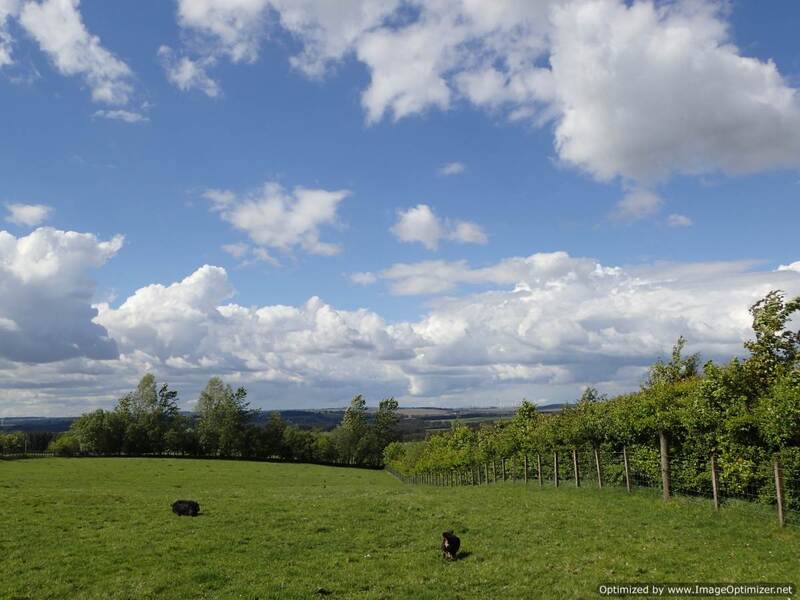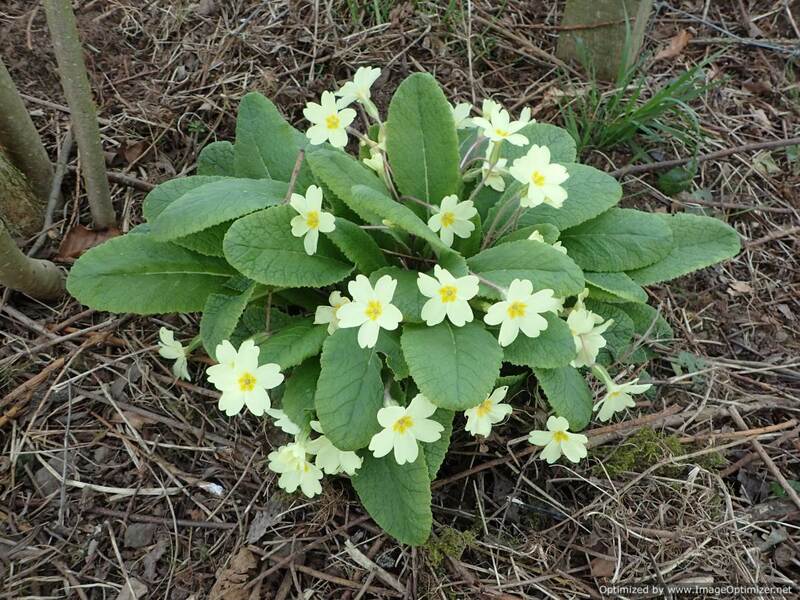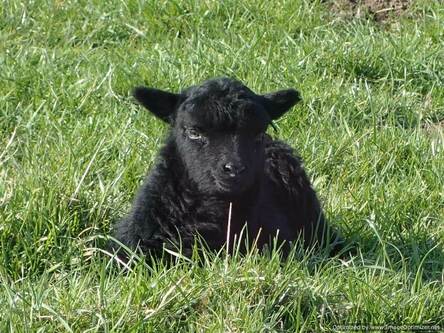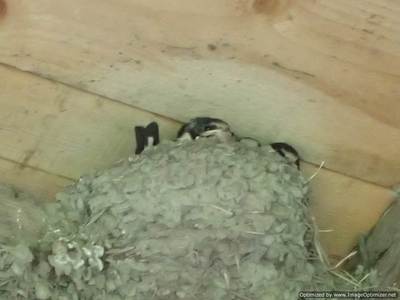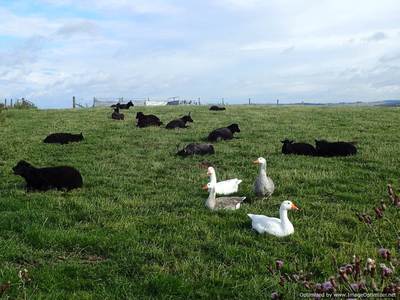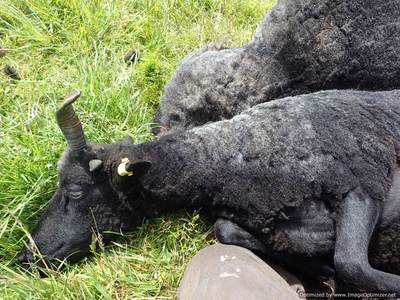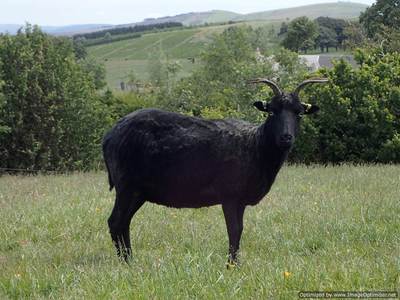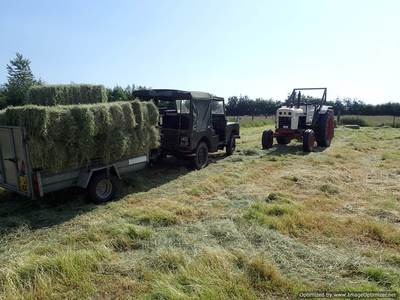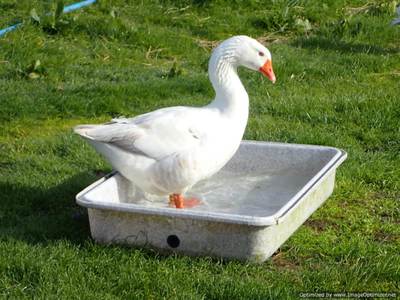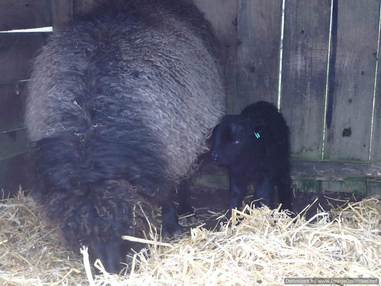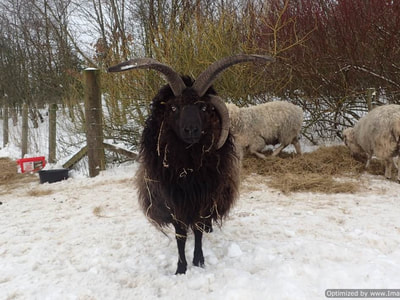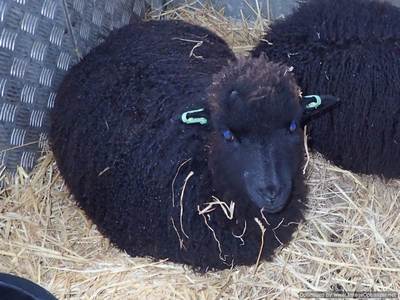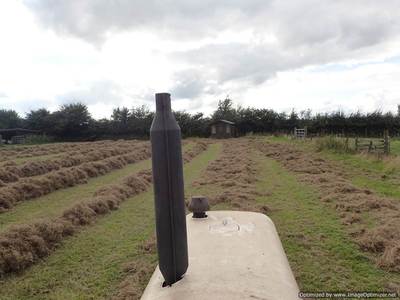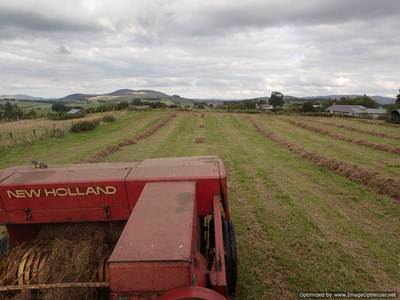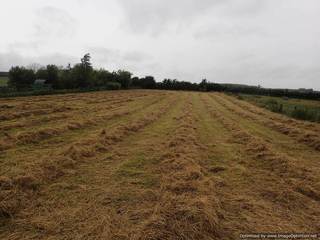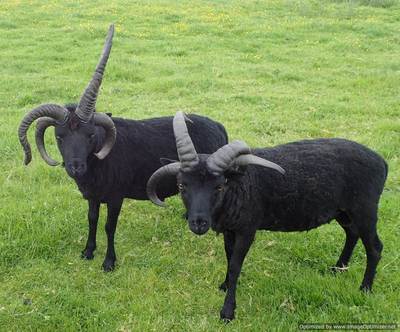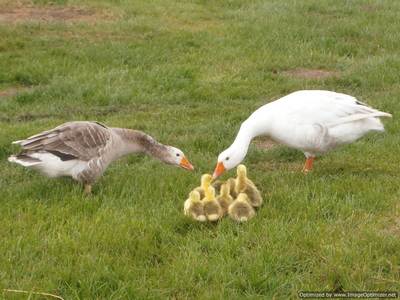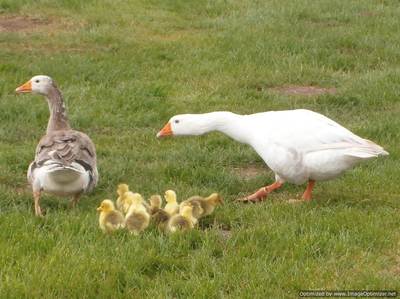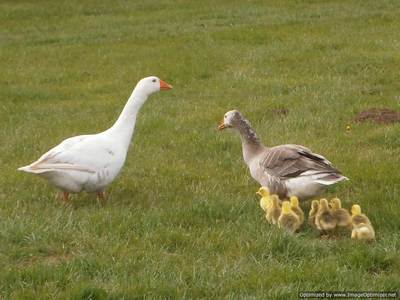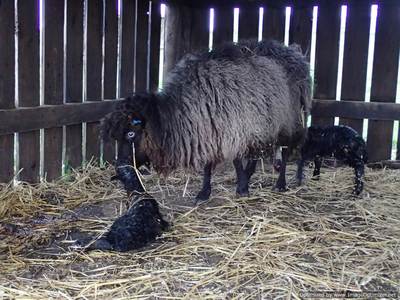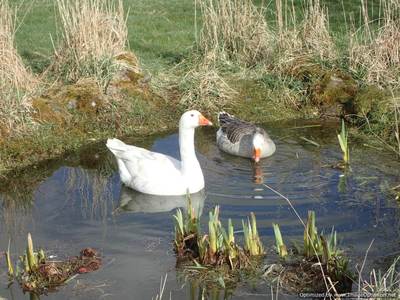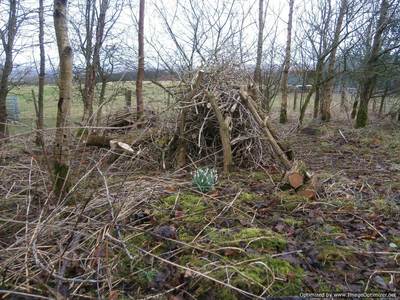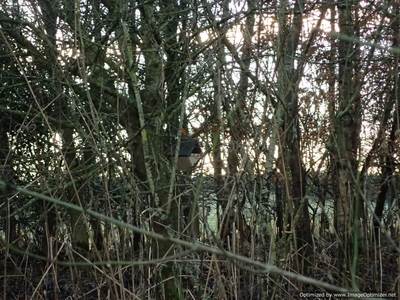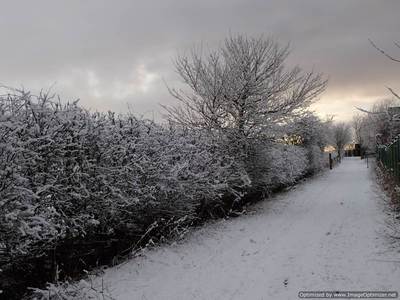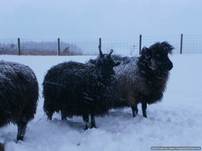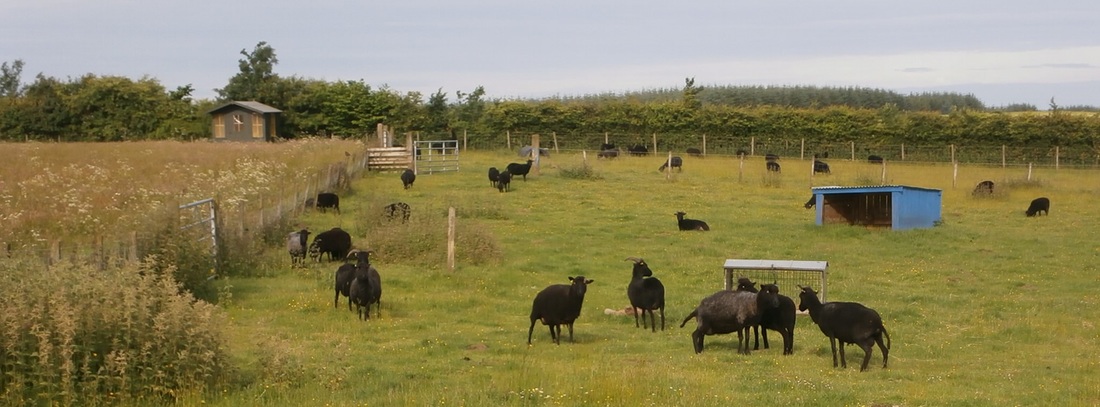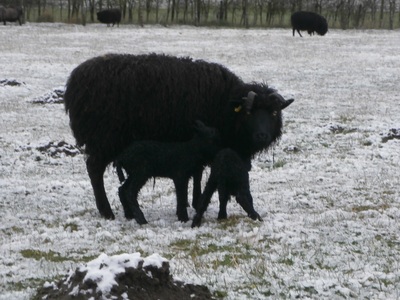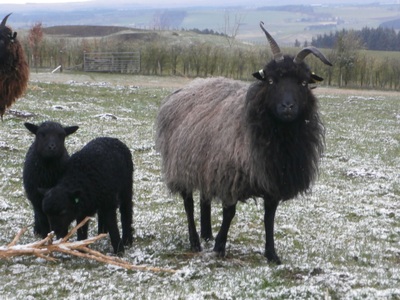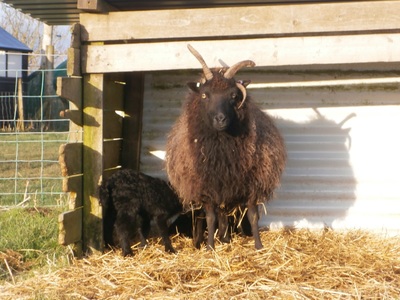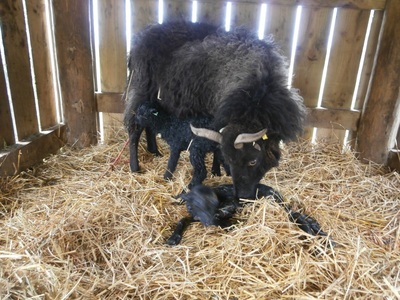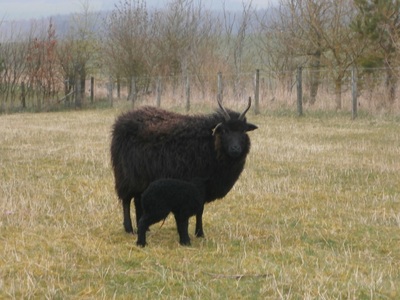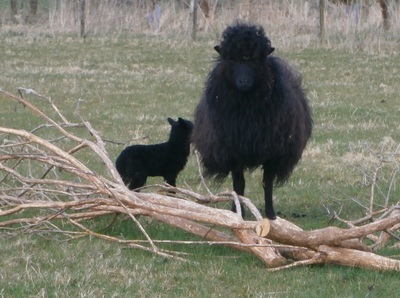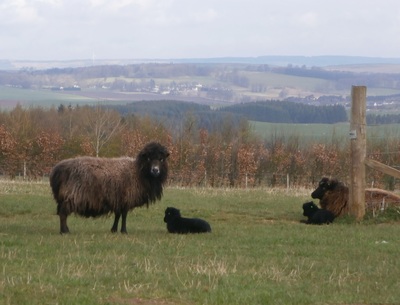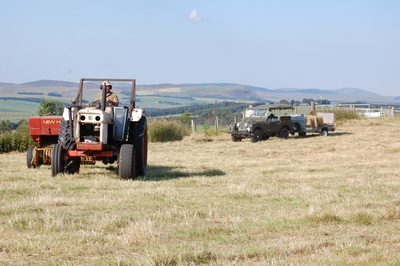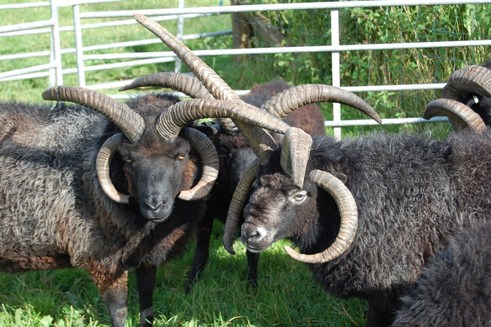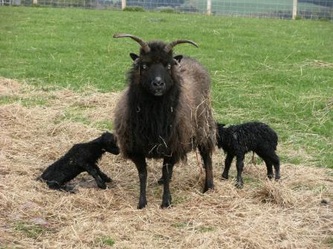Clicking on any picture will take you to the relevant page.
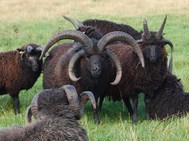
Challenger and friends
At Wester Gladstone, we specialise in breeding registered pedigree Hebridean Sheep with the very rare original characteristics of the breed. If you want to see the ancient type of multi-horned, scurred, polled and the extremely rare topknotted Hebrideans, this is the place to come. The Hebridean Sheep page will tell you more.
2024
What a change in summer. The Guelder roses are adding brightness as is the cow parsley. You can see clearly where the sheep have been browsing the hedges. The have a remarkably long reach.
Polytunnel progress - still more to do. Spot the new asparagus bed!
More and severe winter storms than usual have had their effects. Most noticeably the aging polytunnel cover finally gave up the ghost. It's not quite a straightforward job to replace it. All the timbers must be replaced and the encroaching brambles (other side of the tunnel) cleared to give us some working space. A couple of big old willows came down which will keep us in firewood next winter. At last, we had a dry spell giving us the chance to get on with the hedge trimming. Shown is the East boundary hedge whilst clearing up the debris.
2023
There is no escape from Climate Change. Last summer our well, which has been providing water here for at least 500 years, ran dry. This summer we came within days of it happening again. Mains supply isn't an option so we had no alternative but to having a borehole sunk. The good news is that there is plenty of water deep down so supplies should be assured for the forseeable future.
Babs with her new twins on Easter Sunday.
Snowdrops have given way to primroses, mirabel blossom to wild cherry blossom.
2022
Autumn colour. We planted these field maples about 25 years ago and are now reaping the benefit.
the hay is in
It's always satisfying too get a good crop of hay in. So much depends on the weather. This particular field is
destined to become a wild flower meadow as sheep numbers decrease. In the right hand picture you can see an uncut patch. That's one of several where lesser spotted orchids are growning.
destined to become a wild flower meadow as sheep numbers decrease. In the right hand picture you can see an uncut patch. That's one of several where lesser spotted orchids are growning.
Summer is here.
And shearing season is upon us. All our sheep are hand shorn, a few at a time. Old timer Cadfael was one of the first and looks all the better for it.
lambs!
Some of this year's ewes and lambs. We will have ewes and lambs, 2 and 4 horned plus a couple of tups available for sale later in the year. Watch out for details.
We had some damage from the January storms with more work to do to get things back to normal. The breeding ewes are starting to look rotund - not so long until lambing time!
Meanwhile, there was hedge work to be done. The pictures below show one stretch of hedge from each side. The first primrose is out in the spinney and our I think it's fair to say that Sparrow Hawk eggs qualify as free range.
Meanwhile, there was hedge work to be done. The pictures below show one stretch of hedge from each side. The first primrose is out in the spinney and our I think it's fair to say that Sparrow Hawk eggs qualify as free range.
2021
november and cop26
Our sheep were there, the only farm animals at the entire event, in support of non-intensive traditional animal production. The international group of pastoralists, shepherds and herders and assorted journalists were delighted to get out of the conference and see real sheep and tuck into our Hebridean hogget stew.
october
Getting ready for the tupping season. Old boys Cadfael and Raven have been joined by Ardoch Isambard and Windy Hall Lazurite. With four four horned tups ready to go, maintaining genetic diversity won't be a problem.
Back at the polytunnel, the tomato production has been amazing. Tomato and apple chutney is in production.
Now that the hedges are mature, it's wonderful to see bats flying along them in the summer evenings as they catch insects. It's now late in the season for bat watching but this month we have seen not only a tawny owl in one of our hedges but also, for the first time in 20 years, a barn owl.
We manage our fields to ensure that there is plenty of vole habitat and that, combined with our hedge and tree planting, is helping to to provide a welcoming environment for wildlife.
Back at the polytunnel, the tomato production has been amazing. Tomato and apple chutney is in production.
Now that the hedges are mature, it's wonderful to see bats flying along them in the summer evenings as they catch insects. It's now late in the season for bat watching but this month we have seen not only a tawny owl in one of our hedges but also, for the first time in 20 years, a barn owl.
We manage our fields to ensure that there is plenty of vole habitat and that, combined with our hedge and tree planting, is helping to to provide a welcoming environment for wildlife.
new kid on the block
This is Brodie, a new companion for Sophie who has become the most wonderful step mother spending hours playing with him and, importantly, teaching him how to behave.
june
The senior tups and a Shetland wether enjoying the last rays of sunshine on the summer solstice. Sophie waits for me to put down the camera and chuck her ball.

Summer is here! In fact there's a drought. Lots of watering to be done in the polytunnel. Meanwhile it's pedicures and new hair styles all round for the sheep. Featured is Suzy Quatro. She looks like a two horn with particularly heavy horns, but in fact she's four horned and the horns are fused.
We have had snow lying for a couple of months so far. And cold, down to -9. The sheep are going through hay at a rate. It's also time to replace old nest boxes and put up a few more. Since the introduction of avain influenza restrictions the hens have occupied the polytunnel. It didn't take them long to demolish our prize winning leeks. Looking forward to summer!
2020
What a difference few weeks make. December and a taste of winter. The sheep may be unimpressed but the dogs love it.
Autumn is the time for planting trees and wildflowers. First you need the fencing and then you add the grass cutters. 150 trees arrived on a pallet and deposited on the drive, just when the tractor with front loader was out of action. Undeterred, despite the car being marooned in the drive by the trees, we carried on. Oddly enough, we had ordered more than enough trees, so a fence on the other side of the road was moved to give more planting space. It will take a few years for the trees to really get their feet down but then it should statrt to look good.
Two postscripts. The tractor is now OK, just in time to be too late to move the pallet. Secondly, I did receive an enquiry as to which fencing contractors put up such a fine fence. Modesty prevents me from naming the artist.
Two postscripts. The tractor is now OK, just in time to be too late to move the pallet. Secondly, I did receive an enquiry as to which fencing contractors put up such a fine fence. Modesty prevents me from naming the artist.
New Arrivals! Mia (10) with the tennis ball and Sophie (8) her daughter. Both were in the Edinburgh Dog and Cat home for almost a year before they came to us. They have settled in quickly and are now safe with livestock - always a worry with new/old dogs. They have discovered pick your own strawberries, raspberries and tomatoes and hunt out windfall apples. Delightful companions.
A spectacular midsummer sunset. Covid hairstyles have arrived here too. Old lady Roswitha amongst the cow parsley looks strange without her topknot. Fleeces are carefully selected for further processing. Pictured is Betsy's strangely light coloured first year fleece.
It's not just sheep here. Vegetable growing is important too.
Finally, pictured is Soggy Bottom, a damp corner of a field which was fenced off a couple of years ago and a few trees planted. It's a haven for birds and voles and hares can often be seen here.
It's not just sheep here. Vegetable growing is important too.
Finally, pictured is Soggy Bottom, a damp corner of a field which was fenced off a couple of years ago and a few trees planted. It's a haven for birds and voles and hares can often be seen here.
After a long horribly wet winter Spring has arrived along with dry weather at last. Better still the first lamb arrived on 04 April. Here two of the ever-curious Soays come to inspect Trevenna's new arrival whilst Tippet's lambs enjoy the sunshine. Meanwhile, each Thursday eveningat 20:00 the NHS is given a bagpipe salute.
2019
Fireworks! The tups went in with the ewes on the 5th. Raven looks keen but Cadfael is in no rush. Ravi wonders when he will be big enough to challenge Cadfael. Not yet. All to a glorious backdrop of field maples at their autumn best.
Autumn already and this years lambs are about to go off to a new home. Mixed feelings of course but we know they will be well cared for.
Plenty of grass this year. New additions, the pesky pixies. The polytunnel has done well too.
Not sheep but trees - and the odd small dog. All of these are the result of our planting over the last 25 years. The increase in birdlife has been remarkable, so many siskins, yellowhammers, goldfinches, tree sparrows and many other species that weren't here before. The dawn chorus is quite something.
Spring is here and of course that means new lambs. It's said that rain brings on lambing. In this case is was a haar - a wet foggy easterly wind that went on for days. And then the sun came out. Hedges coming into leaf, primroses beginning to replace the daffodils and of course a winter's worth of outdoor tasks awaiting. Spotted the first leveret of the year. Now we have breeding hares established, we take great care with our pasture management to ensure they are not disturbed.
Winter and the season of hedge cutting not to mention more snow. On the right is pictured Gladstone Saphira, our last 2 horned ewe a few days before she died in January. She was sold by us some years before and subsequently brought back as a rescue and spent her last years here in retirement as a pampered sheep.
2018

Freezing conditions and it's still October (just). We have even had our first snow flurries. The long hot summer is definitely over. Tupping time is here.
Hares have successfully bred in our fields this year, putting a stop to any field topping, A small price to pay. The shed is full of fledging second brood swallows limiting any chance of work in there. Meanwhile the sheep and geese, not to mention the hens, are quietly getting on with life.
The three stages of shearing. That's it done for this year. On the same day we cut the hay, three weeks earlier than ever before. As they say, make hay while the sun shines.
The late spring has brought perfect weather. The lambs are growing and shearing time is upon us. Magnus the Shetland Goose is pictured in his paddling pool, ignoring the others swimming in the pond.
It was a long winter - snow in 6 successive months but at last Spring is here and lambing has started. This season's mothers are all fairly elderly, 7 to 11 years old, and certainly know what it's all about. On the left, Trevenna is sheltering from the sleet with her newly born tup lamb. On the right, Gentian (11) is out and about with her day old twins.
WINTER IS HERE. Snow and sub-zero temperatures once again after several mild winters. Just as well we have hardy livestock to cope with the blizzards.
november 2017

Farewell Blondie aged 20, the last white Hebridean sheep. We live in an age of extinctions, and now white Hebrideans have joined the list of creatures we will never see again.
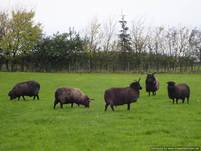
Cadfael is in with his ewes at last. These are older ewes ranging in age from 7 to 11, demonstrating that Hebs are productive long after you would consider breeding commercial sheep.
Getting quieter now that sheep sales are over - with sheep going to the Isle of Lewis, the Lake District and Devon. Interest in the ancient type of sheep with varied fleeces, topknots and scurred horns is at last increasing, perhaps in some measure due to the remarkable uniformity of sheep appearing at shows. At the shows I attended, every Hebridean had an identical long jet black fleece which now seems to be de rigeur in the ring. When we heard of the dispersal of a local commercial 4 horn flock, our determination to maintain the diversity of the ancient type meant we just had to head out with the trailer. These lambs are far, far too precious to go to the butcher.
october 2017
september 2017
At last, 26 days after being cut, the weather relented for a couple of days allowing us to get the hay in. We even took the opportunity to unroll a bale of straw and put it through the baler. So much more manageable as small square bales.
August 2017
What a cold, wet month. Just waiting for a couple of warm dry days to get the hay in. The geese are fully grown now and the first ones have gone to their new homes. More available!
june 2017
Shearing is all done for this year. Grass is growing, as are the lambs and goslings. The pond is getting rather crowded.
may 2017
Magnus and Minerva take their nine newly-hatched Shetland goslings for their first look at the world.
The baby blackbirds in their nest in the rhubarb patch fledged just before the weather broke, as did the dunnocks nesting in the neighbouring plant.
April 2017
Spring is here, planting is underway and, finally, lambing has started. Here Trevanna washes her new-born twins whilst Magnus and Minerva have a relaxing paddle in their pond. Aphrodite (bottom left) was the last to lamb. Now that lambing is over, it's clearly nesting season.
february 2017
It's important to complete any hedge maintenance before the nesting season. With 1/2 mile of hedge to look after, only a relatively small stretch is traditionally laid. The rest requires a tractor-mounted cutter. The hedges are deliberately not uniform with many different native tree species planted. Stretches are allowed to grow to varying heights to provide optimum habitat for a variety of bird species. One stretch is left untouched as a woodland strip. Spot the nest boxes!
It's not just hedges. With our woodland management log piles are left for the benefit of of birds, small mammals and inverterbrates.
january 2017
After a mild start, winter has finally arrived. Despite a plentiful supply of hay, the ewes prefer digging for grass whereas the tups spend all their time at the hay heck.
OCTOBER 2016
The latest arrivals are a pair of Shetland Geese, Magnus and Minerva. Shetland Geese are critically endangered so we are hoping that they will in due course produce healthy goslings to add to the numbers.
September 2016
Twelve ewes and lambs were delivered to Sutherland - quite an epic trip whereas others have gone not so far afield. There are still three ewe lambs available and a selection of two and 4 horned tups, lambs plus a shearling. The remaining sheep have more grass than they know what to do with, for the moment at least.
august 2016
After continuous torrential rain the three days of summer arrived and we did get the hay in. No pictures I'm afraid - it was all a mite hectic.
July 2016
The sheep are shorn, the lambs are thriving, the hay will soon be ready to cut. Not a bad time of year. Note how efficient the sheep are at trimming hedges. You can see exactly how far they can reach.
may 2016
23rd. Shearing started today and Cadfael was the first victim... All our sheep are hand shorn in the field. Much quieter and calmer than machine clipping in a shed. There is the added advantage that hand shearing cuts through the rise in the fleece making the fleece rather better for hand spinning. Machine clipping can cut below the rise, a natural band of weakness, leaving a potential break in the fibre which would have to be removed by the hand spinner at carding time.
April 2016
The scene on 29th April - a Bank Holiday weekend of course!
After a long, wet winter we finally arrived at lambing time. Katie and Flora were the first to produce their twins, Roswitha last with her single. As you can see, the various shelters were popular.
Meanwhile, unconcerned with lambing, the ewe hogs are having fun.
November 2015
The tups are now in with the ewes, a few days later than usual due to the particularly bad spell of weather. There are 4 tups to 15 ewes in their respective groups. Why so many tups? On a commercial scale, you use one high-quality (how do you define high quality?) tup on as many ewes as you can. However, this dramatically reduces the genetic diversity of the flock. To maintain genetic diversity, ideally you should use one tup per ewe. What we are trying to do with our groups is maintain various bloodlines and the ancient characteristics, not feasible with using just the one tup.
August 2015
|
Despite a particularly cold and wet summer, we did manage to get the hay in. Stacking this year was made much easier as the builders took a break from working on the house roof to lend an enthusiastic hand. Meanwhile, the lambs are growing strong and healthy. We have ewe lambs, mostly 4 horned, available to sell in September.
|
July 2015

That's shearing over for this year. The lambs are growing well and the hay will soon be ready to cut - weather permitting!
April 2015
All the Hebs have now lambed, outdoors on their own as usual. The only hiccup was Brigitte (15 years old with the grey muzzle - see right below) attempting to steal a new born lamb from one of the first-timers. All was resolved and Brigitte now has a lamb of her own who she guards jealously.
February 2015
January 2015
Winter is here once more. After severe gales and the usual power cut the temperature dropped and snow arrived. Back to normal after last year's mild and snowless winter. Note the evidence of how the top horns are used for scraping snow off the grass.
Summer 2014
We make our own organic hay. This year we held off until late July despite the fabulous early summer weather. Cutting hay too early is disasterous for ground nesting birds. Our reward was our best hay crop ever. The only problem was a puncture on the old David Brown tractor. The offending wheel was quickly changed for an old trailer one, as you can see in the picture.
Showing
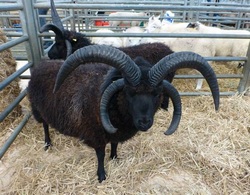 Photograph by David Halls, Lesmahagow
Photograph by David Halls, Lesmahagow
We are somewhat ambivalent about the merits of showing sheep, but there is no doubt that shows are a good way of letting people see your sheep. The Scottish Smallholders and Growers Festival was held in Lanark in 2013. Here Gladstone Challenger is looking at the photographer, whilst Ace is more interested in the bale of hay in the next pen.
Judging sheep

Champion Castlemilk Moorit, Reserve White Shetland
This is Banchory Show with Gordon having just finished judging the Northern Short tailed sheep class. A grand day out in glorious sunshine.
A Scottish breed for Scottish conditions
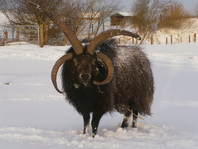
Gladstone Laughing Boy (2005-2015) is up to his knees in snow. His thick double coated fleece gives him the essential protection from the worst of weather conditions.
Here is a fine tangle of horns.
We brought the tups in to check them over and couln't resist taking this picture. We hope you like it. On the left is Cinnabar, since sold, on the right is Laughing Boy and hiding behind them is Challenger.
Some of our breeding ewes
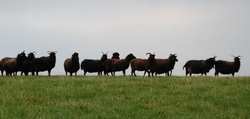
Within the Gladstone flock of Hebridean Sheep there are many examples of the diversity to be found in the breed. As well as different fleece types, you will also see examples of polled and topknotted sheep amongst the various 4 horned examples.
An old man and his sheep
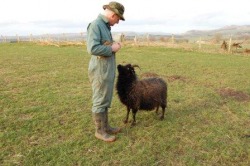
Jezebel, a very pregnant old lady graciously accepts yet another digestive biscuit.
In the pictures below Jezebel, then aged 15, had just given birth to twin ewe lambs. Pictured on the left at 10 minutes old, in the centre at 40 minutes old and on the right a few weeks later.
Jezebel was the oldest recorded Hebridean sheep when she died on Christmas day 2015.
In the pictures below Jezebel, then aged 15, had just given birth to twin ewe lambs. Pictured on the left at 10 minutes old, in the centre at 40 minutes old and on the right a few weeks later.
Jezebel was the oldest recorded Hebridean sheep when she died on Christmas day 2015.









